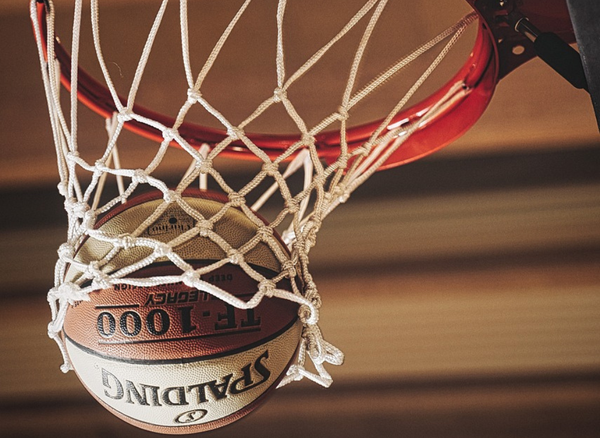Ever found yourself glued to the TV, popcorn in hand, wondering how long is a college basketball game? If you're someone who got dragged to a game by a friend, understanding the game length can make the experience more enjoyable. Grab your popcorn and let's find out how long you need to stay on that couch.
Men vs. Women: Game Length Differences
NBA games are also divided into quarters, but 12 minutes each quarter. So men's colllege games just keeps it simple with just two halves.
NBA Games
However, with timeouts, fouls, and commercial breaks, NBA games often last around two and a half hours.
The longest NBA game on record went into six overtime periods, lasting a whopping 78 minutes of actual playing time. So, if you think college games can be long, NBA games can be even longer.
High School and Youth Basketball Games
High school basketball games are generally shorter than college games, consisting of four quarters of eight minutes each. Youth basketball games can vary in length, often depending on the age group and league rules.
Younger players typically have shorter games to accommodate their stamina and skill levels. So, if you're attending a high school or youth basketball game, expect it to be shorter than a college game.
International Basketball Federation (FIBA) Games
FIBA games, which govern international basketball, have their own set of rules and game lengths. These games consist of four quarters of 10 minutes each, making them slightly shorter than college games.
However, like college games, FIBA games can also be extended by overtime periods and other stoppages. So, if you're watching an international game, be prepared for some variability in game length.
Actual Playing Time
The actual playing time is just the tip of the iceberg. The clock stops for various reasons making the game last longer than the 40 minutes of regulation play.
Factors Affecting Game Length
Several factors can affect how long a college basketball game lasts.
Commercial breaks during televised games also add to the duration. So while the game may be 40 minutes regulation time, it typically stretches to about 2 hours and vary depending on these factors.
Timeouts
Each team is allowed four timeouts per game. These timeouts can be used strategically to rest players, make substitutions, or plan the next play. In addition to team timeouts, there may be up to eight timeouts, for media timeouts, which occur at specific intervals during the game.
These timeouts can add a few minutes to the game, but they also provide a breather for everyone involved, including the fans who might need a quick bathroom break.
Halftime Break
Ah, halftime—the perfect opportunity to grab a snack or stretch your legs. The halftime break in college basketball lasts 15 minutes. This gives players a chance to rest and strategize for the second half, while fans can discuss the first half's highlights.
During this break, you might also catch some entertainment, like cheerleading performances or mini-games. So don't rush back to your seat too quickly; you might miss some fun!
Overtime Periods
If the game is tied at the end of regulation play, it goes into overtime. Each overtime period lasts five minutes. The game continues with additional overtime periods until one team emerges victorious.
The longest college basketball game on record went into seven overtime periods! Imagine the stamina required to keep playing at that level for so long. It's a test of endurance for both players and fans.
The Role of the Shot Clock
The shot clock is a crucial element in basketball that keeps the game moving. In college basketball, the shot clock is set to 30 seconds for both NCAAM (mens) and NCAAW (womens).
This means that teams have a limited time to attempt a shot, which adds a sense of urgency and excitement to the game. The shot clock resets after certain events, like a missed shot or a foul, adding another layer of strategy to the game.
Free Throws and Other Game Stoppages
Free throws can significantly affect the length of a game. Each free throw takes a few seconds, and multiple free throws can add up, especially in a game with many fouls.
Other game stoppages, like injuries or disputes over calls, can also extend the game. These stoppages are part of the game’s unpredictability, keeping fans on the edge of their seats.
Commercial Breaks and TV Timeouts
Televised games come with their own set of interruptions—commercial breaks. These breaks occur at specific intervals and can add several minutes to the game.
TV timeouts, or media timeouts, are another factor. These are scheduled stoppages that allow broadcasters to air commercials. While they can be a bit annoying, they also give fans a chance to grab a snack or take a quick break.
How Many Timeouts Are There?
In addition to the four timeouts each team gets, there are eight TV timeouts in a college basketball game. These timeouts occur at the first dead ball after the 16, 12, 8, and 4-minute marks of each half.
These timeouts can add up, making the game last longer than the 40 minutes of regulation play. But they also provide opportunities for teams to regroup and strategize.
The Impact of Overtime Periods
Overtime periods can significantly extend the length of a game. Each overtime period lasts five minutes, and the game continues with additional overtime periods until one team wins.
The longest college basketball game on record went into seven overtime periods, making it a marathon for both players and fans. Overtime periods add an extra layer of excitement and unpredictability to the game.
The Influence of Different Leagues
Different basketball leagues have their own rules and game lengths. For example, the Women’s National Basketball Association (WNBA) games consist of four quarters of 10 minutes each, similar to FIBA games.
These differences can affect the pace and duration of the game, making each league unique. So, if you're watching a game from a different league, be prepared for some variations in game length.
The Role of the National Collegiate Athletic Association (NCAA)
The NCAA governs college basketball in the United States, setting the rules and regulations for the game. These rules include the length of the game, the number of timeouts, and other game stoppages.
The NCAA's rules are designed to ensure a fair and exciting game for both players and fans. So, if you're watching a college basketball game, you can thank the NCAA for the structure and rules that make it so enjoyable.
The Excitement of Playoff Games
Playoff games bring an extra level of excitement and intensity to college basketball. These games often have higher stakes, with teams vying for championships and glory.
The intensity of playoff games can lead to more fouls, free throws, and other stoppages, potentially extending the game length. But the excitement and drama of playoff games make them worth every extra minute.
The Importance of the Final Score
The final score is the ultimate measure of a game's outcome. It determines the winner and can have significant implications for a team's season and standings.
The final score can also affect the length of the game, especially if it leads to overtime periods. So, while the game might be scheduled for about two hours, the final score can add some unpredictability to the actual duration.
FAQs
How do overtime periods work in college basketball?
If the game is tied at the end of regulation play, it goes into overtime. Each overtime period lasts five minutes, and the game continues with additional overtime periods until one team wins.
What are the differences between men’s and women’s college basketball games?
A standard college basketball game for mens consists of two halves, each lasting 20 minutes, with a 15-minute halftime break. While the women’s college basketball games consist of 4 quarters of 10 minutes each.
How long is a college basketball game?
A standard college basketball game lasts about two hours, including all stoppages and breaks. The game consists of other factors like fouls, free throws, and timeouts that can extend the actual duration.
What is the longest college basketball game on record?
The longest college basketball game on record featured seven overtime periods. This marathon game serves as an extreme example of how long a college basketball game can last under extraordinary circumstances.
How do timeouts work in college basketball?
Each team is allowed four timeouts per game, with a maximum of three carrying over into the second half. Additionally, there can be 8 timeouts per game with media coverage, occurring at specific points in each half. These timeouts can significantly extend the game's length.
Summary
A college basketball game typically lasts about two hours, but various factors can affect the actual duration. From regulation play and halftime breaks to timeouts and overtime periods, several elements contribute to the length of the game. Whether you're watching men’s or women’s college basketball, high school games, or even international games, understanding these factors can enhance your viewing experience.









